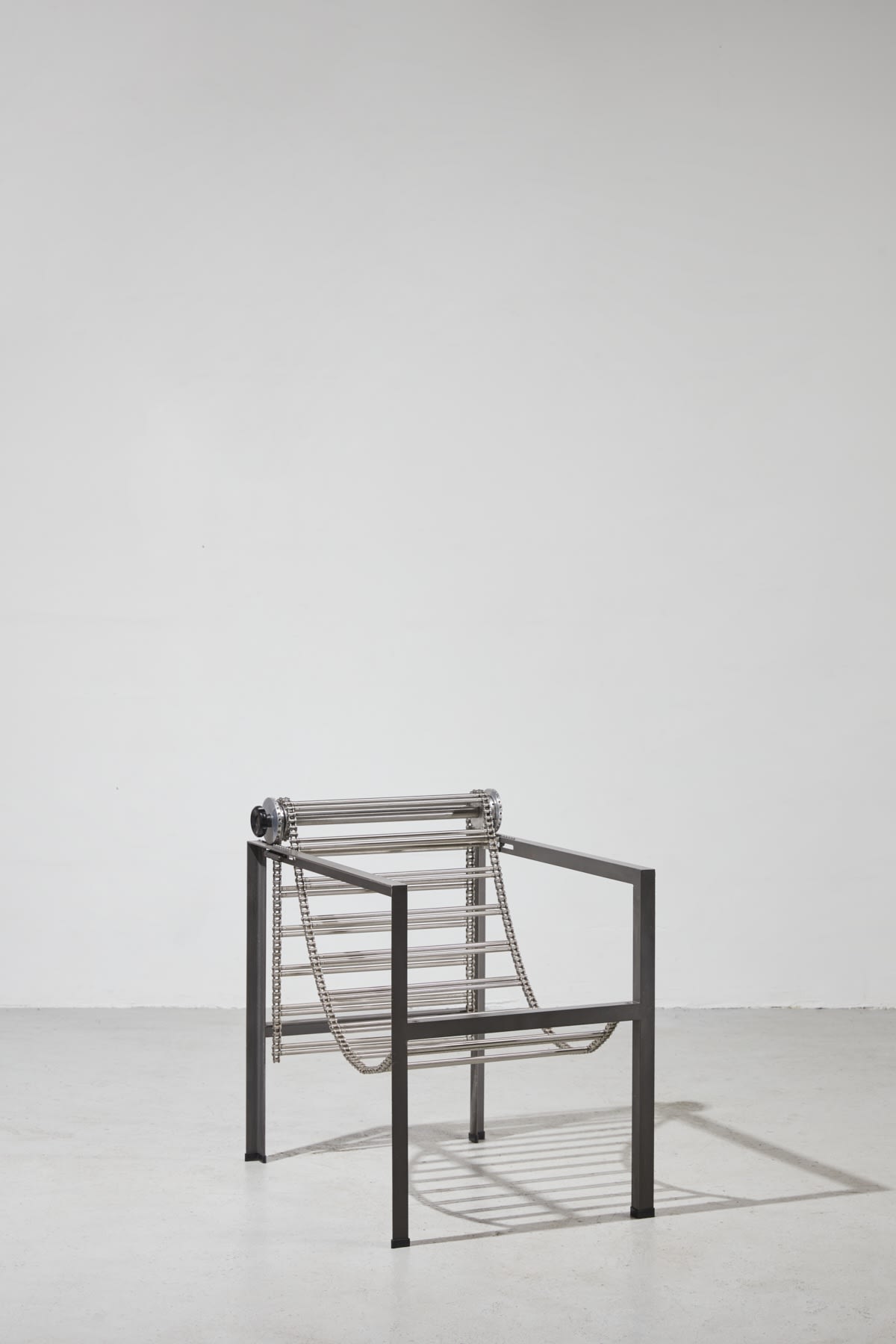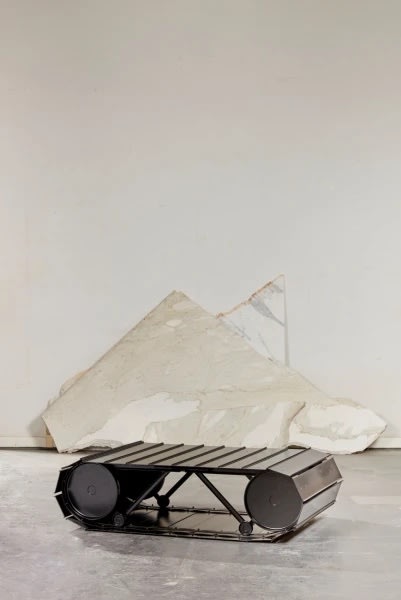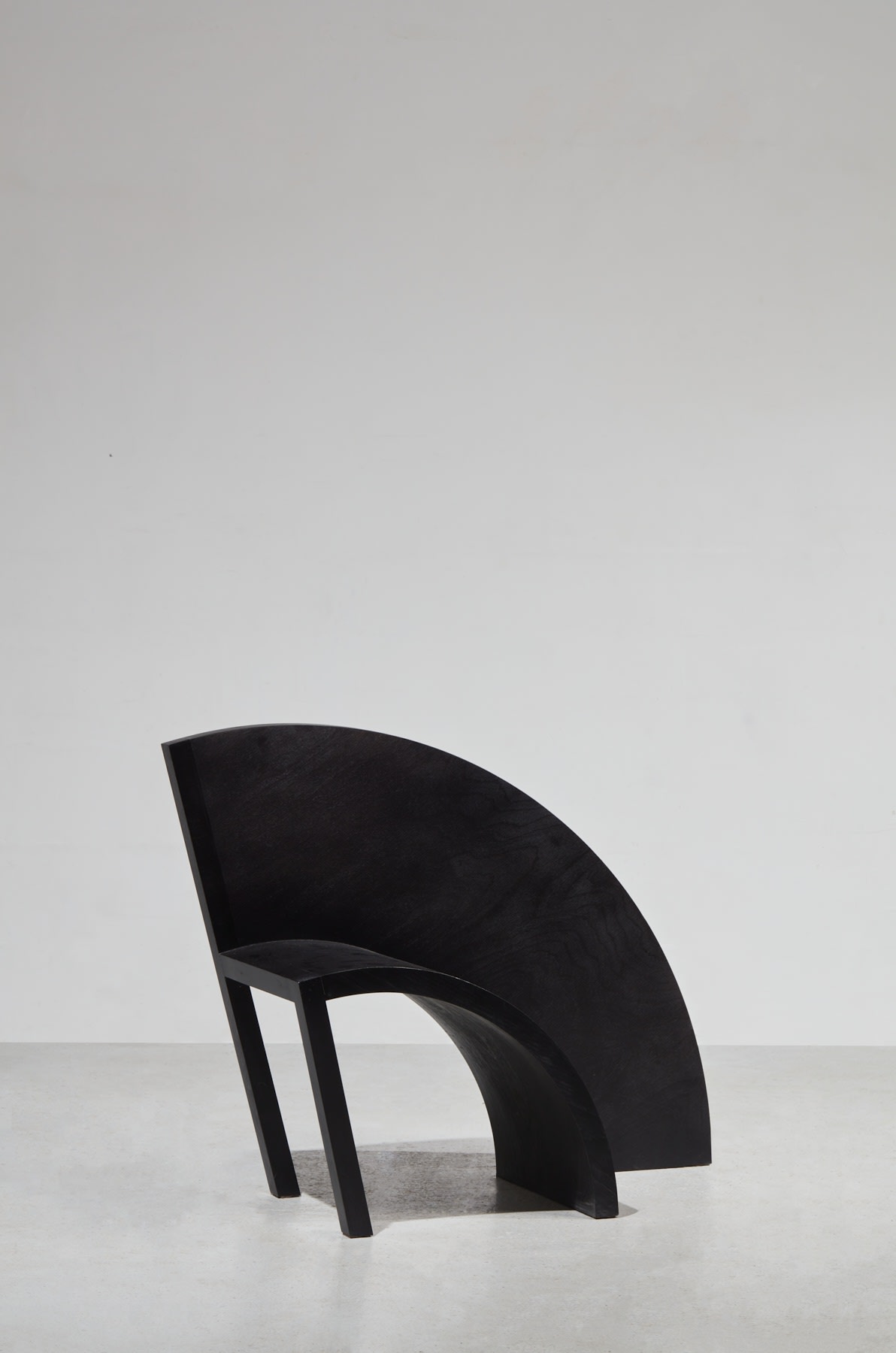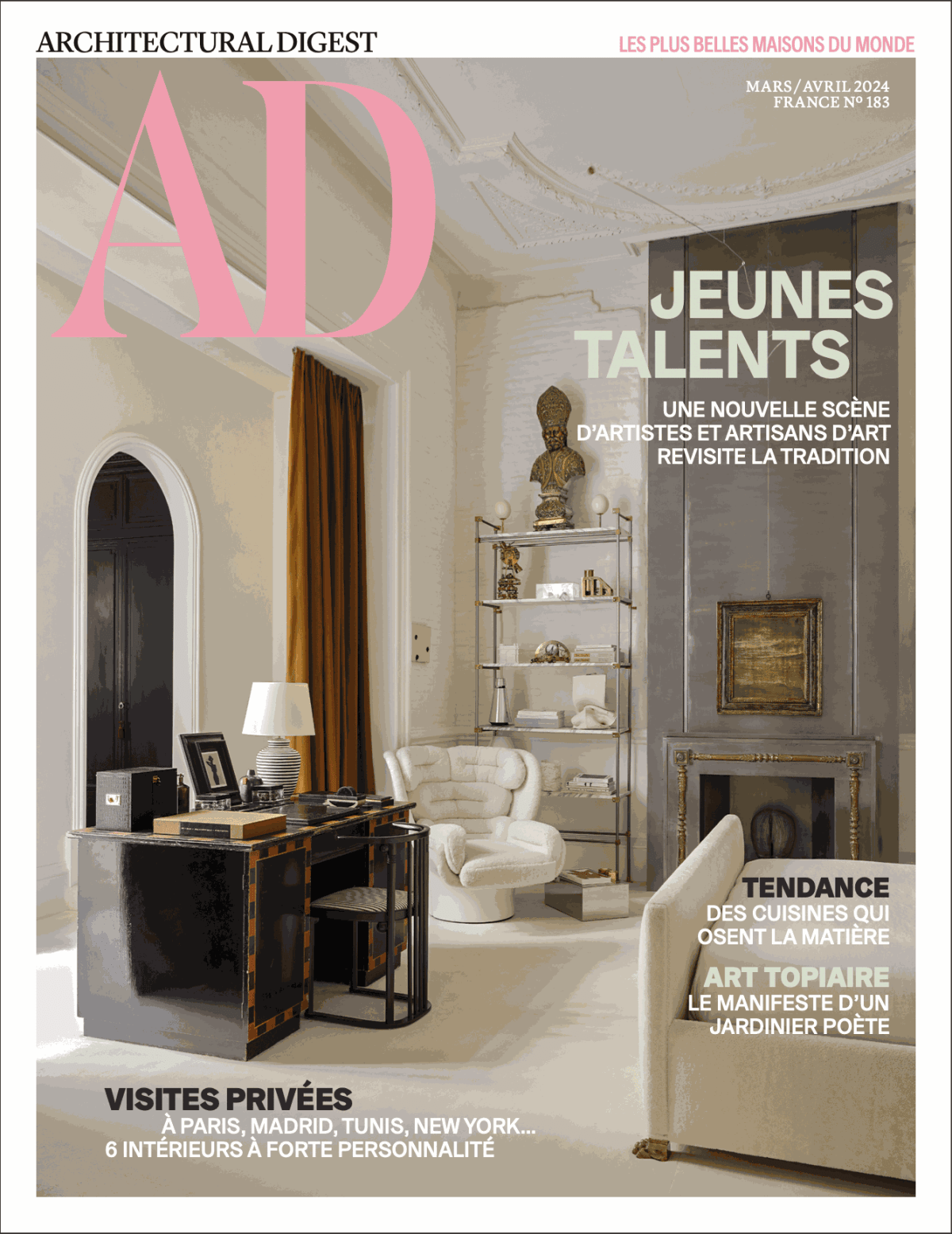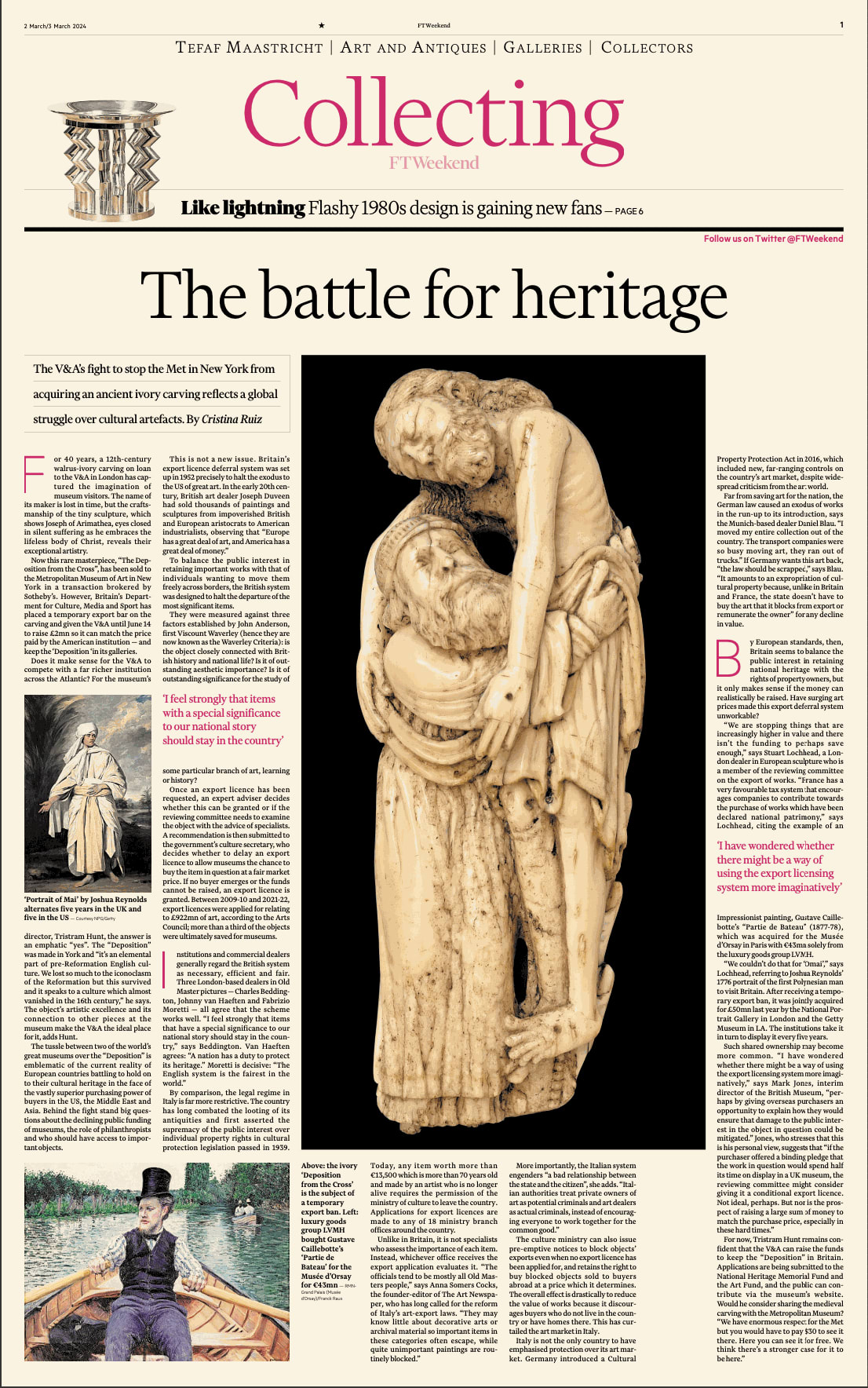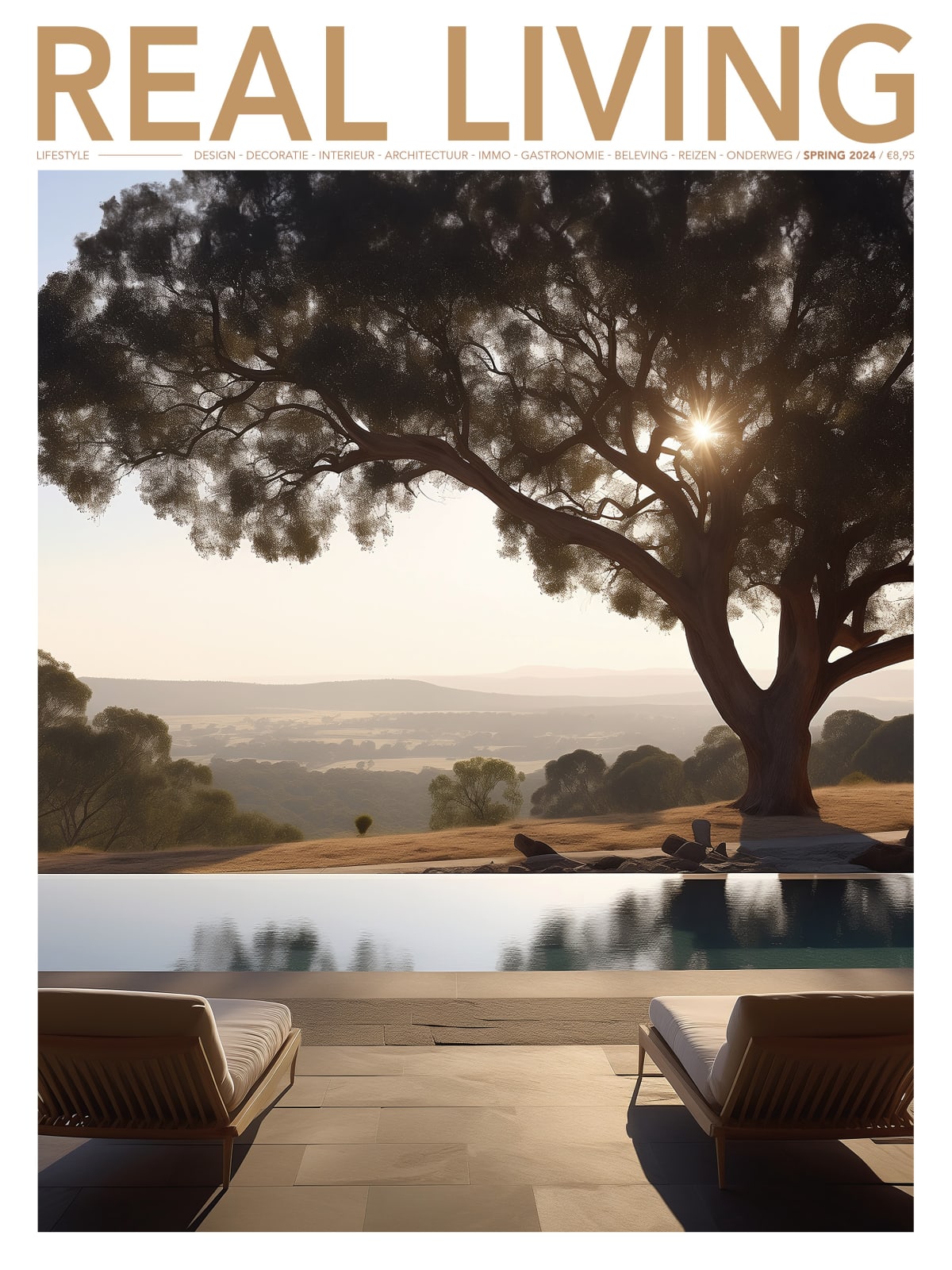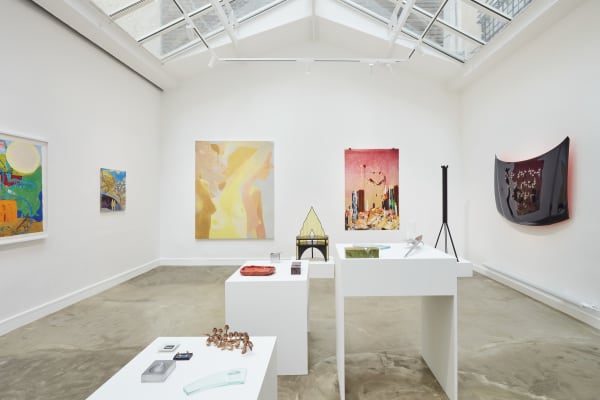Né à Rome en 1950 et formé à l'origine comme architecte, Paolo Pallucco est sans aucun doute l'un des designers les plus radicaux et les plus engagés des années 1980, tant par les pièces qu'il a produites que par sa personnalité haute en couleur.
Au tournant des années 90, de nombreux créateurs atténuent leurs déclarations pour entrer dans une production plus adaptée au grand public, laissant de côté le caractère intransigeant des années précédentes. Pallucco vend sa société en 1988 et tourne la page en 1990, restant pour toujours un jeune créateur d'une grande intégrité, ne permettant pas aux demi-mesures ou aux concessions d'altérer sa vision.
Paulo Pallucco fonde Pallucco en 1980, l'objet premier de l'entreprise étant la réédition de créations oubliées de la première moitié du XXe siècle, telles que le lampadaire Fortuny, la chaise de Robert Mallet-Stevens ou la chaise Sandows de René Herbst. Bien qu'il ne s'agisse pas de ses propres créations, il fait déjà figure de précurseur. En effet, le phénomène de la réédition est né dans les années 1980 et le style moderniste des années 1930 a été redécouvert au tout début de la décennie. Grâce à cette première activité, Pallucco dispose des moyens de production industrielle les plus avancés, ce qui lui permet quelques années plus tard de produire un mobilier radical d'une extrême qualité. Cette particularité est tout à fait unique pour les années 80, les designers ayant souvent du mal à trouver des industriels assez audacieux pour mettre à disposition leurs outils de production. Ses meubles sont si bien produits qu'il se permet d'y ajouter des fonctions plus ou moins absurdes, des éléments industriels liés au monde de la machine, imitant ainsi le mobilier moderniste caractérisé par la recherche du fonctionnalisme absolu et de l'économie de moyens au détriment de l'esthétique ou du confort.
Ses créations sont profondément ancrées dans l'idéologie des années 1980 de refus des décennies précédentes et des préceptes modernistes. Toujours dans cette idée de rupture, ses pièces intègrent de nombreuses références au vocabulaire de la guerre : la table basse Tankette, 1987 évoquant les chaînes d'un char d'assaut, le fauteuil Barba d'Argento, 1986 rappelant une mitrailleuse ou encore le porte-manteau Bocca da Fuoco, 1987 une sorte de canon en pleine explosion.
Le mobilier de Pallucco ne peut être considéré et apprécié uniquement par son aspect esthétique mais aussi à travers toutes les références qu'il intègre, comme la poésie de Rainer Maria Rilke en premier lieu, mais aussi le cinéma, la photographie et bien qu'il soit lui-même athée, la religion catholique - encore omniprésente à l'époque en Europe et surtout en Italie. Mais Paolo Pallucco ne serait pas Pallucco sans son entourage. A commencer par son épouse de l'époque, Mireille Rivier, une Franco-Suisse sans qui rien n'aurait été possible. Les créations sont signées de leurs quatre mains. Lui, rêveur fou, a les idées, elle, designer pragmatique, les transpose dans la réalité, les rendant réalisables et productibles. Si des concessions doivent être faites par rapport à l'idée originale, le projet est toujours abandonné. Les créations sont donc le fruit d'une histoire d'amour, d'une complicité et d'une complémentarité. Et puis il y a les autres, comme Peter Lindbergh, photographe vedette de l'époque. Ses honoraires sont inimaginables pour l'entreprise de niche d'un marché déjà de niche mais Paolo Pallucco tente le coup. Lindbergh est séduit et devient son photographe. Il y a aussi quelques designers dont il produira les pièces comme Rei Kawakubo : après un choc esthétique lors de la visite de la boutique Comme des Garçons à Tokyo, Pallucco propose à la créatrice japonaise de collaborer. Il produira tous les meubles qu'elle dessine pour les boutiques de la marque.
Born in Rome in 1950 and originally trained as an architect, Paolo Pallucco is undoubtedly one of the most radical and committed designers of the 1980s, both in terms of the pieces he produced and his colorful personality.
His creations are deeply anchored in the 1980s ideology of refusal of the previous decades and the Modernist precepts. Always in this idea of rupture, his pieces integrate many references to the vocabulary of warfare: the coffee table Tankette, 1987 evoking the chains of a tank, the armchair Barba d’Argento, 1986 recalling a machine gun or the coat rack Bocca da Fuoco, 1987 a kind of cannon in full explosion.
Pallucco’s furniture can not be considered and appreciated only by its aesthetic aspect but also through all the references it integrates, such as the poetry of Rainer Maria Rilke in the first place, but also cinema, photography and although he is himself an atheist, the Catholic religion— still omnipresent at the time in Europe and especially in Italy. But Paolo Pallucco would not be Pallucco without his surroundings. Starting with his wife at the time, Mireille Rivier, a Franco-Swiss woman without whom nothing would have been possible. The creations are signed with their four hands. He, a crazy dreamer, has the ideas, she, a pragmatic designer, transposes them to reality, making them feasible and producible. If concessions have to be made to the original idea, the project is always abandoned. The designs are thus the fruit of a love story, of a complicity and a complementarity. And then there are the others, such as Peter Lindbergh, star photographer of the time. His fees are unimaginable for the niche company of an already niche market but Paolo Pallucco gives it a try. Lindbergh is seduced and becomes his photographer. There are also a few designers whose pieces he will produce such as Rei Kawakubo : after an aesthetic shock during the visit of the Comme des Garçons boutique in Tokyo, Pallucco offers the Japanese designer to collaborate. He will produce all the furniture she designs for the brand’s boutiques.
-

Revue de Presse / Press Coverage - Paolo Pallucco, Luck and Sex. That's all.
21 March 2022 -

LIGHT MY FIRE, ENFLAMME LA GALERIE KETABI BOURDET
Marine Mimouni, ACUMEN, 28 July 2023 -

FOIRE DESIGN MIAMI, PARIS, NOUS VOILÀ !
Jean-Christophe Camuset, ELLE DÉCORATION, 21 September 2023 -

LA FOIRE DESIGN MIAMI/PARIS EN 5 TEMPS FORT
À l’occasion de la foire Design Miami/Paris, les grands noms du design et de l’art français -Perriand, Lalanne, Starck - sont rassemblés dans un hôtel particulier du XVIIe siècle qui fut la demeure de Karl Lagerfeld.THIJS DEMEULEMEESTER, Sabato - L'écho, 13 October 2023 -

Paris : 8 événements de design et d’art à ne pas manquer cette semaine
Cette semaine, jusqu'au 22 octobre 2023, la capitale française vibre au rythme du design et de l'art. Zoom sur 8 rendez-vous immanquables.Laurine Abrieu et Salomé Mathieu, MILK DECORATION, 16 October 2023 -

Le meilleur de Design Miami/Paris 2023
Très attendue, cette édition inaugurale de la foire Design Miami/Paris accueille une vingtaine de galeries françaises et internationales au sein d’un hôtel particulier prestigieux. Voici les plus belles pièces à découvrir jusqu’à dimanche.Marina Hemonet, AD Magazine, 17 October 2023 -

Treize idées de sorties artistiques pendant la foire Paris+ par Art Basel
L’arrivée de la foire internationale s’accompagne d’innombrables manifestations éphémères autour de l’art contemporain : salons parallèles, expositions d’artistes primés, sculptures en plein air… Les journalistes du service Culture du « Monde » ont fait uRoxana Azimi, Philippe Dagen, Claire Guillot, Emmanuelle Jardonnet et Emmanuelle Lequeux, Le Monde, 20 October 2023 -

Tefaf, l'incontournable rendez-vous
Antiquaires et galeries de toutes spécialités reviennent à Maastricht en nombre pour ce grand raout qui inaugure cette année sa section «Focus», mise en avant d’un artiste ou d’un mouvement particulier.AM, Beaux Arts Magazine, 22 February 2024 -

Réunion au sommet
EventMilk Decoration, 23 February 2024 -

TEFAF : la relève
AD Magazine, 1 March 2024 -

Like lightning Flashy 1980s design is gaining new fans
FT Weekend, 2 March 2024 -

At TEFAF Maastricht 2024, Galleries Boldly Tackle 7,000 Years of Art History
Arun Kakar, Artsy, 8 March 2024 -

Focus, not faff: considered adjustments prove welcome at TEFAF Maastricht
A shorter runtime, a new Focus section and outreach to young buyers show promise as a way forward for the venerable Dutch fairRiah Pryor, THE ART NEWSPAPER, 10 March 2024 -

Real Living NIEUWS
REAL LIVING, 21 March 2024 -

CALL ME BY YOUR NAME
ARK JOURNAL, 21 April 2024
-

IN BETWEEN
Ketabi Bourdet - 22, passage Dauphine 75006 Paris 24 April - 22 May 2025La galerie Ketabi Bourdet a la joie de présenter In Between , une exposition collective rassemblant des œuvres de plasticiens, de designers, et plus généralement d’artistes qui évoluent à la...Read more -

Nouvelles Résolutions Vol.II
Ketabi Bourdet - 22, passage Dauphine 75006 Paris 28 November - 21 December 2024AVEC DES OEUVRES DE :Read more
PAULINE D’ANDIGNÉ
IDIR DAVAINE
GUY DE ROUGEMONT
JO FISH
ELIZABETH GAROUSTE
AUDREY GUTTMAN
ARTHUR LEMONIER
INÈS LONGEVIAL
PAOLO PALLUCCO
BRUNO ROUSSEAUD
ARA STARCK
PHILIPPE STARCK
JULIEN SAUDUBRAY
JEAN-MICHEL WILMOTTE -

Light my fire !
Ketabi Bourdet - 22, passage Dauphine, 75006 Paris 29 June - 28 July 2023Antithétique parce que créateur et destructeur, le feu est mis à l’honneur sous toutes ses formes dans Light my Fire . Il y est domestiqué par Élisabeth Garouste qui forge...Read more -

Sculptures
Set design by Bruno Rousseaud 12 - 18 June 2023The desire to present this ensemble came after the visual shock of the exhibition of Thierry Barbier Mueller’s chair collection staged by Robert Wilson at the MUDAC in Lausanne last...Read more -

Paolo Pallucco, Luck and Sex. That's all.
Ketabi Projects - 22, passage Dauphine, 75006 Paris 3 - 20 March 2022Né à Rome en 1950 et architecte de formation, Paolo Pallucco est sans conteste l'un des designers les plus radicaux et engagés des années 80, tant par les pièces qu'il...Read more









